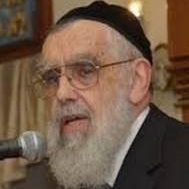Naturally, a Miracle

Perhaps here we have a new meaning for the word shehecheyanu
Were a creature from another planet to alight on Earth during December or January when the fields are dry and bereft of all growth, and were we to tell him (it?) that we earthlings are confident that within one month this arid ground will once again become fertile, the brown will turn to green, and the dead branches and brittle leaves will begin to bud and grow, he would surely gaze at us in disbelief. For him, this would be another indication that the humanoids who dwell on this planet are mad.
Objectively speaking, since this was likely his very first visit to Earth, his skepticism would be perfectly justified. But if this interplanetary visitor were to remain with us for another few weeks, he would realize that our faith in the resuscitation of nature was perfectly empirical. Lifeless, barren ground would awaken, fruit would burst forth from the soil, and all of nature would revive in a spectacular resurrection from the dead.
We “humanoids”view the annual revivication of nature as perfectly normal. We know, from G-d’s promise to Noach, and from our own experience, that “cold and heat, summer and winter… shall not cease”(Bereishis 8:22), and that, l’havdil, in the words of the poet Shelley: If winter comes, can spring be far behind? But if the shriveled earth were to remain shriveled, were vegetation never to appear again, would roses not bloom and fruit not unfold again, that for us would be astonishing. That all this does not happen, and that nature renews itself, is for us normal and a matter of course. It should amaze us, but the familiar does not amaze. Only that which is unfamiliar, that which we have never witnessed, creates surprise and disbelief.
So is it with one of the cardinal beliefs of classical Judaism, as enunciated by Maimonides in his Thirteen Principles: in the fullness of time, at the end of days, G-d will revive the dead and they will live again. Although Jews are a rational people that honors logic and intellect, and our belief system contains very few things that defy human reason, this belief must be taken on pure faith, for obviously no human has ever witnessed or experienced it. The concept seems especially inconceivable to those who are non-believers.
I write this on Chamishah Asar B’Shevat, which the Mishnah terms “Rosh Hashanah La’ilan,” the New Year of the Trees. Beginning with Shevat, all nature returns gradually and revives and flourishes. We witness it year after year, we come to expect the nisecha sheb’chol yom imanu, the daily miracles, but its very regularity causes us to greet it with a yawn, when in fact this annual rebirth should remind us that what seems natural is in fact miraculous.
Is it unreasonable to ask: If within the laws of nature, the dead can live again, why could not this be true of human beings as well? That it has never happened in the past does not suggest that it could never happen in the future — even if we did not have the promise of G-d and His prophets.
It seems to me that even without the element of religious faith, objective reason should not automatically reject techiyas hameisim, since its precursor is adumbrated regularly and is an integral part of nature.
Thus, Chamishah Asar B’Shevat is not only Rosh Hashanah La’ilan, not only the starting date for the maaser tithes, not only the time to eat Israeli carob fruit, not only to recite shehecheyanu over new fruit, not only the celebration of the G-d-given agriculture of Eretz Yisrael; it is also the rebirth and revitalization of the classic Jewish belief in techiyas hameisim.
Perhaps here we have a new meaning for the word shehecheyanu: not only has He kept us in life, but He has also built eternal life into the DNA of His people: even after we are physically gone, He revives us, resuscitates us and gives us chiyus, a renewed life. Indeed, shehecheyanu.
(Originally featured in Mishpacha, Issue 800)
Oops! We could not locate your form.






